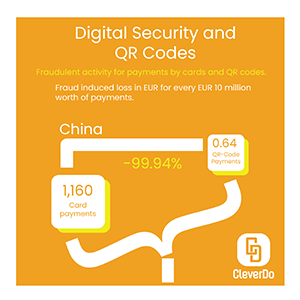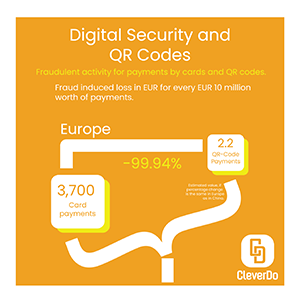QR codes in Europe
Before the pandemic QR codes were relatively unheard of in Europe. This is mainly because Europe has yet to develop a standardised QR payment system. That means that a merchant wishing to use QR code payments has to have a different QR for each provider.
If Europe introduces a standardised QR payment solution it will have a massive impact. Especially, in the fast-growing digital payments environment in the Single Euro Payments Area (SEPA).
It would provide consumers and merchants alike with a flexible, secure, low-cost payment system. Additionally, it will present the potential to save money for both parties. In time, this contactless payment method would find its place in the ranks. Also, it will force providers of other digital payment solutions to lower the cost of their services in order to keep up with the competition.
How do they fare elsewhere?
Many of us have had experiences with QR codes (Quick Response Codes). They are two-dimensional codes that you scan with either your mobile device or POS (Point-of-Sale) terminal. Whether you are the customer or merchant, this results in an instant payment.
QR payment technology is much more popular in Africa, Asia and Latin America where they already have a standardised QR code infrastructure in place.
South Africa’s Ukheshe Technologies recently announced the release of their new Tap-on-Phone payment solution. Their Eclipse API is the first to provide this service without the need for certification and third-party involvement. The result of this is a much lower cost payment solution for merchants, allowing micro, small and medium enterprises to benefit from digital payments. This in turn will help to nurture this emerging economy by bringing more players to the table.


Standardised secure payments
A recent report showed that the implementation of a standardised QR code system in Europe would also help to reduce fraud. For example, in China, when comparing card fraud to QR payment fraud, the difference was staggering!
A comparison was made using projected figures based on those taken from China. The results raise the question, should Europe adopt the QR code system into the SEPA area?
The only answer is yes! Europe needs to take a serious look at moving forward with QR Codes as a secure and simple digital payment option.


Recent Comments